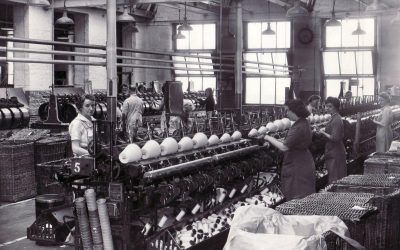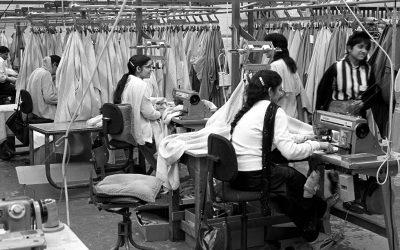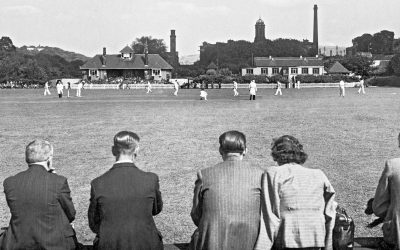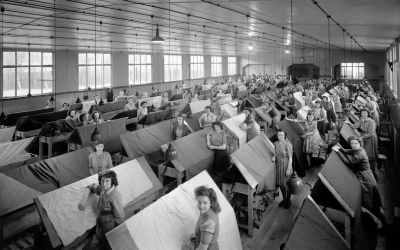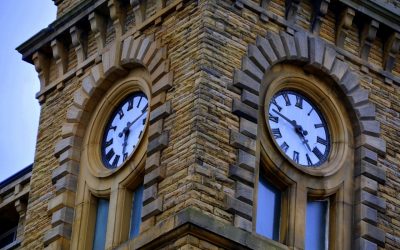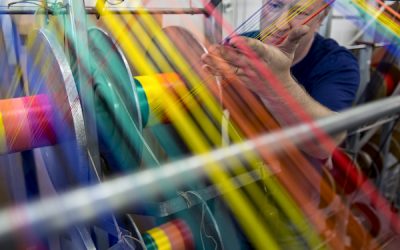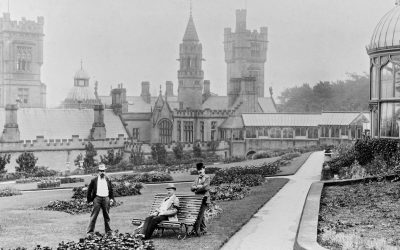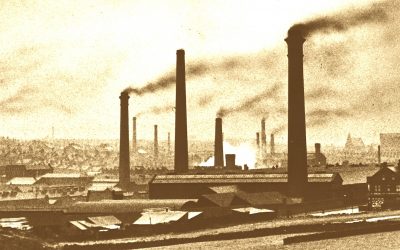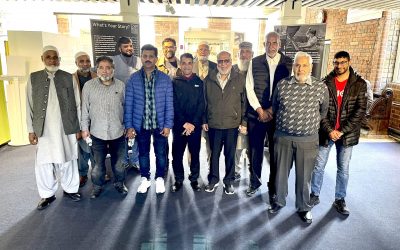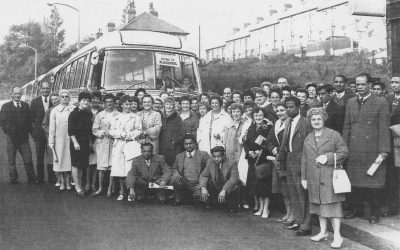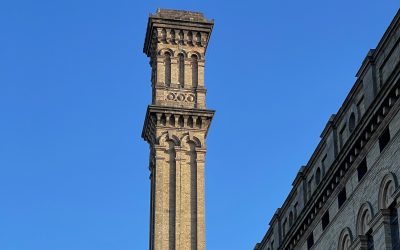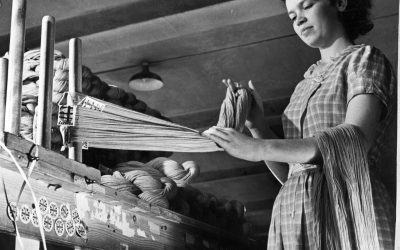How To Use
The Learning Zone is a rich and fascinating resource for all. Take your time to explore and discover the many stories and insights on offer. Whether you are a student, a teacher, a researcher, a community group or an interested individual there should be something for you.
There are two drop down tabs at the top of every page. The Textile Stories menu covers many different aspects of mill life and textile production. The Resources menu has more detailed information, including a fascinating textile map of Bradford, interview audio with transcripts, an image gallery, BCB radio programmes and project videos.
At the bottom of every page are a few suggested activities. Use them as a starting point and then create your own.
We would love to hear about the ways you have used the Lost Mills Learning Zone. Please send any stories, comments or suggestions you may have to info@509arts.co.uk and someone will get back to you.
Multiple Generations in Bradford’s Wool Trade
Dan Lee | Transcript
Certainly when I speak to my dad, definitely he talks about plenty of his uncles working at Woolcombers as overseers. And obviously my gran working at the Wool Board in the canteen there. And I had aunts that used to work as overlookers, menders and burlers and that kind of stuff. So yeah, if you lived in Bradford, a good portion of your family would have been in the wool trade in some form or other.
A Bit of Background
1970s Bradford was a global textile producer. It was a time of Abba and Ford Cortinas, flares and long hair, curry houses and Bollywood. There were hundreds of mills across the district and they produced everything from fine worsted suit material to flock for wallpaper and fabric for funeral gloves.
Over the next 30 years most mills closed. Some were pulled down and others tragically burnt down. Many historic mill buildings still remain and have become offices, factories, cultural centres and apartments. Others stand derelict, waiting for a new lease of life. A small number are still in business, keeping Bradford’s textile industry alive.
Thousands of people worked in the mills. There were designers and doffers, weavers and washers, menders and spinners, drivers and managers, sales people and jobbers. Many millworkers were new arrivals from Pakistan, India, Bangladesh and Eastern Europe. They came and found jobs producing fabrics used all over the world. They all had interesting and different stories to tell and we have put together a selection of soundbites, stories and activities to explore on this site.
The Importance of Bradford’s Woollen Industry
Paul Meer | Transcript
The mills in Bradford…the woollen industry was a crucial industry to this country. So we’d lots of mills in Bradford, hence Bradford used to be covered in a big black cloud of smoke, there were so many mills going. We had what they called the Wool Exchange, which is where people bought and sold wool, not just here in this country but all over…in Australia… all over the world. So this was the hub of the industry in this country. And things were transported down in wagons, and things like that. Earlier on they were transported by boats, and horse and cart, which used to take weeks. But it was a big industry in this country, with all the business in the UK coming through Bradford. So we’d more millionaires in Bradford, at one time, than in London.
Welcome to the Lost Mills and Ghost Mansions Learning Zone
This is where you can explore life in Bradford’s textile industry from 1970 onwards. Find out about places, people and their stories of work and play.
Over 80 hours of recordings tell of the working day, lifelong friendships and the skills needed to produce Bradford’s famous textiles. There are stories of romance, accidents, arguments, industrial disputes, food and fun, laughter and tears.
Who We Are
509 Arts is based in Shipley, Bradford and we work with communities to tell their stories. We have created plays, operas and exhibitions about many things, from car love, climate change and childhood dreams to stories of cycling, memorable landscapes, devastating floods and growing old in Bradford.
Lost Mills and Ghost Mansions was made in partnership with Bradford Community Broadcasting and you can find the radio programmes that we made together here. You can find @509arts on various socials and Lost Mills and Ghost Mansions was funded by Bradford Council, the National Lottery Heritage Fund and the Arts Council.
The Layout of Knowle Mill
Christopher Ackroyd | Transcript
Northern Broadside did theatre productions in the derelict parts of the mill. When I was in there, I was thinking, ‘I wonder if this is the room where my grandad worked?’
Discover More
Lost Mills
Working life
Photograph: Tim Smith | Lifting hanks of wool from a dyeing vat at Harrison Gardner and Company. If you've seen old mills, pictures of old mills and that, you'll see that there's a big mill with five or six storeys. And then at the back of it, probably, there's a one...
Diverse workforce
Photographs: Bradford Museums & GalleriesBackground: Bradford Museums & Galleries Photograph: Tim Smith | Combing at Haworth Scouring CompanyBackground: Bradford Museums & Galleries Photograph: Jaz Oldham | Jaz's Sister and Friend working in the mill The...
Time Off
Background: Bradford Museums & Galleries | Cricket Match in Saltaire Photograph: Jaz Oldham | Party in the MillBackground: Bradford Museums & Galleries | Cricket Match in Saltaire Photograph: Patricia Crabtree | Harold Heppleston, Patricia's Father, and...
Rights & Wrongs
Photograph: Val Rowland | Anwar Hussain (L), Bill Morris, former General Secretary of the Transport and General Workers Union (C), and Muhammad Rasab (R). Representing the racial discrimination case against John Haggas Ltd onstage at the Trade Union Annual Congress...
Changing Ways
Photographs: Mark Stevenson | Dalton Mill and Clock Tower I could see at that time that the mills were starting to close around Keighley all over the town and I thought ‘I need to be moving on somewhere’ and that's when I left in 1975 and joined the fire service....
Textiles Today
Background Photograph: Tim Smith | Laxtons' state-of-the-art spinning machinery in Baildon Title Photograph: Tim Smith | Weaving of Rainbow Ribbons at Wyedean Weaving in Haworth In 2022, I saw this job. And I rang them up and said ‘I’m looking for a job as a...
Ghost Mansions
I know that Robert Clough - he had a big mansion, and he donated a Christmas tree for the people of Keighley one year. Well, I won't be swayed on this at all. Particularly on a Friday night, when everybody else had gone home,...
Research & Map
Background Photograph: Bradford Museums & Galleries | Bradford's Skyline Title Photograph: Rainbow School | Visiting Bradford's Industrial Museum I grew up next to Marriner’s and I actually watched it burn down. It would have been in the ‘70s. I was in my...
Do It Yourself
Photograph: Alan Dix | Sangat Centre at Bradford Industrial Museum I think what people should do is show an interest in local history because one day (and I hope this never happens) there won’t be people like you, and there won’t be people like me, who...
Mediawall
Photograph: Margaret Dobson via Keighley and District Local History Society | Employees of John Haggas Ltd's Outing to Blackpool Lost Mills Media Wall Here we celebrate the rich visual history shared by contributors and project partners whilst researching Bradford's...
Archive
Photograph: Alan Dix | Lister's Mill ChimneyWelcome to the Lost Mills Archive. Here you will find all the recordings and transcripts that have been made during the lifetime of the project. It contains a wealth of information - far more than we could ever use in the...
Contributors
Thank you Lost Mills and Ghost Mansions has involved at least 500 people one way or another and their support, participation and commitment has taken us on a very special journey. Most of the people we interviewed were in their 70s and 80s and some were over 90. It is...
The contents of the 509 Arts website are protected by copyright unless otherwise stated. The Lost Mills Learning Zone recordings, text and activity suggestions are free to use for non-commercial community and education purposes. If you wish to use the materials for any other purpose, email info@509arts.co.uk with your plans.
Some of the images and video footage belong to a third party and are credited as such. If you wish to use any such content, please contact 509 Arts or the copyright owner directly.




